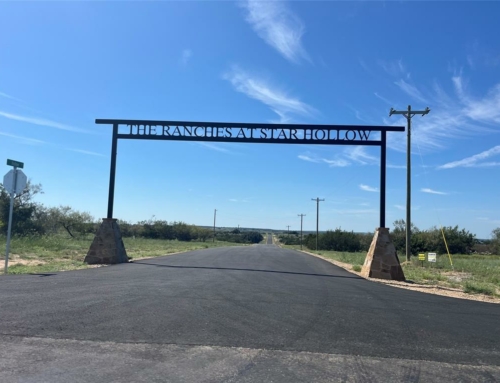As a custom home builder in North Texas, we’ve worked with a wide range of flooring options in our projects. Drawing from our experience, we want to provide insights on these choices to help you select the flooring that best suits your home and lifestyle. With factors like durability, water resistance, and maintenance in mind, here’s a breakdown of the most popular flooring options and what you can expect from each, including a cost comparison to guide your decision.
1. Real Wood
Cost: 8-10
Pros:
- Natural beauty: Real wood provides timeless, natural warmth and beauty.
- Durability: Can last decades when properly maintained.
- Repairable: Can be sanded and refinished multiple times to restore its look.
Cons:
- Not waterproof: Wood can warp or stain if exposed to water.
- Sensitive to pets: Scratches and dents from pet nails can be an issue.
- Installation: More labor-intensive and time-consuming.
- Cost: One of the more expensive flooring options.
Best For: Homes without heavy moisture or pet activity, especially in living rooms or bedrooms.
2. Engineered Wood
Cost: 6-8
Pros:
- Appearance: Looks almost identical to real wood but at a lower cost.
- More stable: Less likely to warp from humidity or temperature changes.
- Water resistant: Performs better in moisture-prone areas than real wood.
Cons:
- Limited refinishing: Can be sanded only once or twice before the veneer wears through.
- Sensitive to scratches: Not as durable as real wood for pets or heavy traffic.
Best For: Homes where the wood look is desired, but with some concern about moisture, such as kitchens or hallways.
3. Luxury Vinyl Plank (LVP)
Cost: 3-6
Pros:
- Waterproof: Great for bathrooms, kitchens, and basements.
- Durable: Resistant to scratches, dents, and pet wear.
- Easy to install: Often a DIY project, with quick installation.
- Cost-effective: Offers the look of wood without the price.
Cons:
- Repairs: Damaged planks may be difficult to replace individually.
- Noise: Can sound hollow underfoot if not properly installed with underlayment.
Best For: Families with pets or kids, and in areas where water or spills are common.
4. Laminate
Cost: 2-5
Pros:
- Cost: One of the most affordable flooring options.
- Appearance: Offers a convincing wood or stone look.
- Scratch-resistant: More durable than real wood for pets and high traffic.
- Easy installation: Click-and-lock planks are a fast installation method.
Cons:
- Not waterproof: Spills can cause the layers to warp or swell.
- Cannot be refinished: Once damaged, laminate must be replaced.
Best For: Budget-friendly homes with moderate foot traffic but less concern about water exposure.
5. Tile
Cost: 5-9
Pros:
- Waterproof: Tile excels in bathrooms, kitchens, and laundry rooms.
- Durability: Resistant to scratches and staining.
- Cool underfoot: Ideal for North Texas’ warmer climate.
- Long-lasting: Can last decades without needing replacement.
Cons:
- Cold: Can feel too cold in the winter months, especially in bedrooms.
- Grout maintenance: Requires regular cleaning and resealing to prevent stains.
- Hard surface: Not ideal for pets or children due to its unforgiving hardness.
Best For: High-moisture areas
6. Decorative Epoxy
Cost: 4-7
Pros:
- Waterproof: Great for high-moisture areas like garages, kitchens, or even basements.
- Durability: Epoxy creates a tough, high-gloss surface that’s resistant to stains, spills, and heavy traffic.
- Customizable: Available in a variety of colors, patterns, and textures, making it a flexible choice for design.
- Low maintenance: Easy to clean and maintain, making it great for both indoor and outdoor use.
Cons:
- Cold and hard: Similar to concrete, epoxy can feel cold and hard underfoot.
- Installation: Requires professional installation and a curing time, making it less DIY-friendly.
Best For: Garages, basements, and modern indoor spaces looking for durability and a custom look.
7. Acid Stained Concrete
Cost: 1-4
Pros:
- Durability: Incredibly tough and can last a long time.
- Waterproof: Resistant to water, making it great for basements or outdoor areas.
- Customization: Available in a variety of stains, colors, and patterns.
- Easy maintenance: Requires minimal upkeep. Clean with water, no chemicals.
Cons:
- Cold and hard: Not the most comfortable underfoot and can feel too cold in winter.
- Noise: Echoes and noise can be an issue, especially in open spaces.
- Cracks: Hairline cracks are expected.
- Risky: During construction many things can happen to affect the concrete flooring negatively that cannot be fixed without making it look worse. Color and variation of concrete is not consistent.
Best For: Basements, outdoor spaces, or modern homes looking for an industrial or sleek design.
8. Polished Concrete
Cost: 7-9
Pros:
- Long-lasting: Highly durable and capable of lasting a lifetime.
- Waterproof: Resistant to moisture, spills, and heavy foot traffic.
- Sleek appearance: Provides a modern, minimalist aesthetic with a high-gloss finish.
- Low maintenance: Easy to clean and maintain over time.
Cons:
- Cold and hard: Not the most comfortable option, and can feel especially cold in winter.
- Noise: Can cause echoes and is not great for noise reduction.
- Cracks: Like stained concrete, polished concrete may crack over time.
Best For: Industrial or minimalist designs, basements, garages, and high-traffic areas.
9. Carpet
Cost: 2-7
Pros:
- Comfort: Soft underfoot and ideal for bedrooms or living rooms.
- Noise reduction: Excellent for reducing noise in homes with multiple levels or kids.
- Cost-effective: Generally affordable.
Cons:
- Not water-resistant: Spills and pet accidents can cause permanent damage or odors.
- Allergen concerns: Can trap dust, allergens, and pet dander.
- Shorter lifespan: Typically needs replacement after 10-15 years, especially in high-traffic areas.
Best For: Bedrooms, living rooms, or areas where comfort and noise reduction are priorities.


